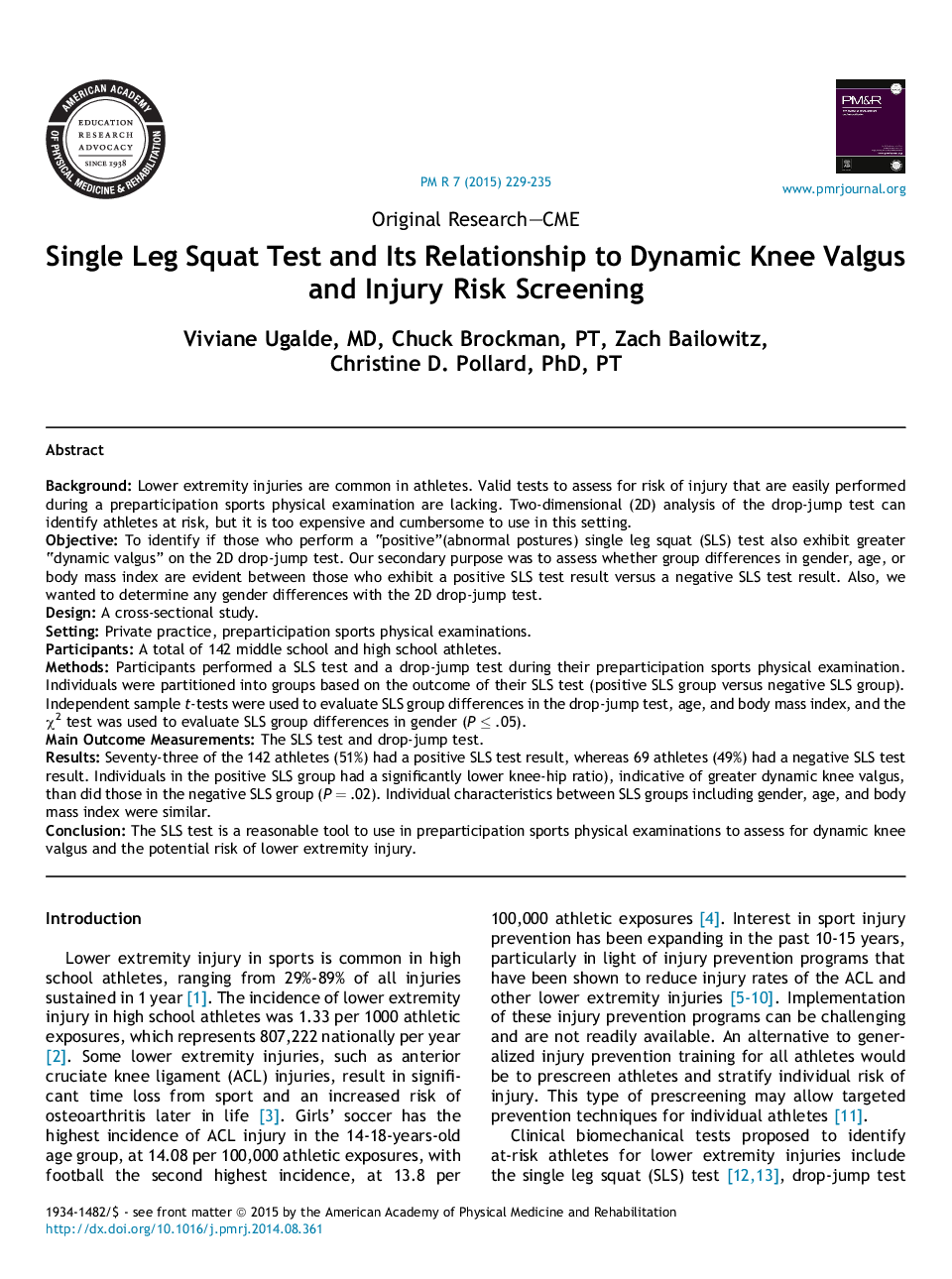| کد مقاله | کد نشریه | سال انتشار | مقاله انگلیسی | نسخه تمام متن |
|---|---|---|---|---|
| 2705158 | 1144733 | 2015 | 7 صفحه PDF | دانلود رایگان |
BackgroundLower extremity injuries are common in athletes. Valid tests to assess for risk of injury that are easily performed during a preparticipation sports physical examination are lacking. Two-dimensional (2D) analysis of the drop-jump test can identify athletes at risk, but it is too expensive and cumbersome to use in this setting.ObjectiveTo identify if those who perform a “positive”(abnormal postures) single leg squat (SLS) test also exhibit greater “dynamic valgus” on the 2D drop-jump test. Our secondary purpose was to assess whether group differences in gender, age, or body mass index are evident between those who exhibit a positive SLS test result versus a negative SLS test result. Also, we wanted to determine any gender differences with the 2D drop-jump test.DesignA cross-sectional study.SettingPrivate practice, preparticipation sports physical examinations.ParticipantsA total of 142 middle school and high school athletes.MethodsParticipants performed a SLS test and a drop-jump test during their preparticipation sports physical examination. Individuals were partitioned into groups based on the outcome of their SLS test (positive SLS group versus negative SLS group). Independent sample t-tests were used to evaluate SLS group differences in the drop-jump test, age, and body mass index, and the χ2 test was used to evaluate SLS group differences in gender (P ≤ .05).Main Outcome MeasurementsThe SLS test and drop-jump test.ResultsSeventy-three of the 142 athletes (51%) had a positive SLS test result, whereas 69 athletes (49%) had a negative SLS test result. Individuals in the positive SLS group had a significantly lower knee-hip ratio), indicative of greater dynamic knee valgus, than did those in the negative SLS group (P = .02). Individual characteristics between SLS groups including gender, age, and body mass index were similar.ConclusionThe SLS test is a reasonable tool to use in preparticipation sports physical examinations to assess for dynamic knee valgus and the potential risk of lower extremity injury.
Journal: PM&R - Volume 7, Issue 3, March 2015, Pages 229–235
